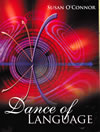Analytical Essay
 Writing an essay that analyzes a piece of literature requires many sophisticated skills that, having acquired the tools to do so,
will allow students the freedom to read, think, and evaluate critically and creatively as well as write in a clear, expressive way.
It is helpful to remember that writing is a process,
and therefore gathering the tools for analysis, writing a draft, and finishing the writing process with several editing attempts and proofreading will take time.
Writing an essay that analyzes a piece of literature requires many sophisticated skills that, having acquired the tools to do so,
will allow students the freedom to read, think, and evaluate critically and creatively as well as write in a clear, expressive way.
It is helpful to remember that writing is a process,
and therefore gathering the tools for analysis, writing a draft, and finishing the writing process with several editing attempts and proofreading will take time.
The first step in writing a critical analysis of literature asks the writer to focus. A student can examine a piece of literature from many angles, so which area of the piece will take center stage? The answer will determine the direction of the essay. For example, several possible approaches include:
- Historical background of the piece: What effect does it have on the literature?
- Philosophical background of the piece: How does the author communicate that philosophy? Does it reflect the historical background as well?
- Structural: How are genre, diction, figurative language, and style important elements of the writing?
- Symbolic: Is the story told on an archetypal as well as literal level? What images and motifs contribute to the symbolic level of the piece?
- Thematic: After examining all of the elements that comprise the piece of literature, what idea about life seems to emerge? How do these literary elements support it?
Once the writer determines the focus of the analysis, she must write a thesis, the sentence that communicates the exact purpose to be elaborated on in the writing. An interesting approach is to have a concrete image illustrate an abstract idea:
- In To Kill a Mockingbird by Harper Lee, the gifts in the knothole symbolize remnants of the only life Boo Radley has to offer the children he loves.
The concrete images are the items Boo places in the knothole of the tree; the abstract idea is the symbolism of Boo’s life.
The organization of any piece of writing must contribute to the fluency that enables clarity. For beginning writers, fluency and clarity can be accomplished through a structured way called point-example-commentary. The writer establishes a point about the thesis, explains it with an example, and, to insure understanding, adds commentary that elaborates on or explains the example. This task can be done in three sentences, but good writing shows, not just tells. The more light the writer can shed on the topic, the better the chances of communicating clearly. For example:
- A watch and chain are reminiscent of the customary inheritance from father to son. The gift Boo leaves to Jem and Scout, a broken watch and chain, indicates something far deeper. With this humble offering, Boo’s sadly inadequate relationship with his own father who destroys any possible future life for his son at age seventeen underscores Boo’s own broken life and the time that stops much too early for him.
- Because one understands the life, the symbolic death, and the newly found second chance for friendship that Boo Radley experiences, the reader also comprehends in the end not only Boo’s decision to step into the light and save his young friends from an untimely death; the reader accepts the reason Atticus and Heck Tate must bend the law to protect him when he does that.
The framework of this organization—at least three main points--keeps the writer on track, allowing him to think and write about the topic in a way that will be easy for the reader to follow.
The conclusion seems to be one of the most difficult parts of an essay to write for many students, yet this difficulty can be assuaged easily by directing attention toward the bigger picture. A summary of the paper is simple, but it is almost cliché. Why not tell the reader what you’ve told him in the conclusion but take it a step farther. For example:
 Writing and reading analytical essays can be painful or they can result in joyful success.
The skill with words that the writer uses to craft an analysis of a piece of literature makes all the difference in achieving an excellent versus a mediocre outcome,
but those skills must be developed over time with concomitant opportunities for practice.
Writing and reading analytical essays can be painful or they can result in joyful success.
The skill with words that the writer uses to craft an analysis of a piece of literature makes all the difference in achieving an excellent versus a mediocre outcome,
but those skills must be developed over time with concomitant opportunities for practice.
